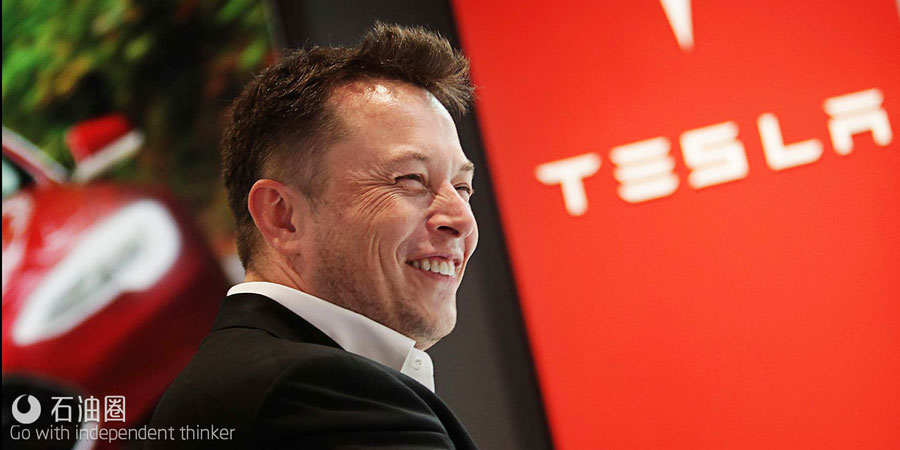
上世纪70年代,沙特阿拉伯石油部长Yamani曾说过:石器时代的结束,并不是因为石头没有了;同样地,石油时代的终结,也不并是因为石油没有了。受电动汽车发展的影响,未来数十年,汽车工业的结构性变化将对全球原油需求产生不可逆转的打击。事实真将如此吗?
电动汽车革命的枪声已打响
随着电池技术的不断突破,新能源汽车成本一降再降,加上传统内燃机汽车的碳排放问题,近年来电动汽车呈现迅猛发展态势。根据彭博新能源财经(BNEF)的报道, 电动汽车革命的枪声已打响,如果长期预测足够准确的话,其影响力将波及全球经济的每一个角落。
由于风能和太阳能设备数量的骤增,使用传统化石燃料发电已经变得非常不经济。在美国,几乎各大煤炭公司都在申请破产保护或处于财务困境之中,过去一个世纪美国的主要电力能源行业正在逐渐没落。即便是太阳能和风能的小小渗透,都足以在整个电力市场掀起波澜,不过目前只是处在革命的开端。
近日,BNEF创始人之一Michael Liebreich表示,这一演变对未来造成的长期影响绝非夸张。例如,目前的电力行业正变得越来越依赖多元化动力来源,整个电网系统正变得更清洁、更数字化。特别是清洁能源,正逐渐成为电动车的竞争对手。
BNEF预计,到2040年,电动汽车将占全球汽车市场的35%。而且由于技术发展太快,届时占有率可能更高。按最夸张的情形预测,到2040年,所有销售的新车中电动汽车将占47%。
电动汽车优势凸显
IEA在今年年中发布的《2016全球电动汽车展望》显示,过去十年里,电动汽车的电池生产成本下降近3/4,并将保持继续下降趋势,同时电池的能量密度增加五倍,但仍将提高以适应更长里程。
电池成本的快速下降,将是电动车爆发式增长的关键因素。BNEF表示,电动汽车在很多方面比内燃机汽车更具优势,不仅仅是排放。
Liebreich写道,电动汽车“动力驱动更顺畅,而且加速较稳,可以在家里或办公室进行充电,维护少,可以避免化石燃料的污染排放,进而也能提高石油进口国的能源自主权。”
另外,当涉及到自动驾驶、信息娱乐系统等功能时,电动汽车也都“大大优于”以化石燃料为动力的汽车。Liebreich称,“比较两种动力系统:传统汽车震动大、使用挥发的液体能源污染环境;电动汽车则完全数字化,配备许多传感器,有可靠的电子元件控制系统,哪种更有未来显而易见。”
考虑到这些,他得出了一个令石油业非常担忧的疑问,“15年后,有什么样的理由让您愿意购买一台柴油或汽油驱动的二等车呢”?
未来电动汽车将对化石燃料产业相关的独家供应商产生巨大冲击。在这种大背景下,软件、网络安全和其他帮助电网运营商解决负载平衡的数字技术将得到发展。当然电力供应系统必不可少,电动汽车本身需要大量的电能,同时当连接到电网系统后,电动汽车本身也能成为一个小型发电设备。
因此,受电动汽车革命影响最大的非石油业莫属。根据BNEF的预测,到2040年,电动汽车将使原油需求量减少1300万桶/天。这一数字并不夸张——如果事实果真如此,OPEC到那时肯定不会再实施冻产计划,油价也不会太高。
各国政策:未来发展态势初现端倪
目前,为配合国际减排目标,德国推行一项新规定,到2030年,德国所有新登记的汽车都将需要达到零排放的标准,这就意味着,传统的燃油汽车将面临禁售的局面。
而在德国之前,荷兰、挪威也都提出了2025年禁售燃油车的计划,其中挪威还是西欧最大的产油国、全球主要产油国之一。去年年底在巴黎召开的联合国气候变化大会上,由德国、英国、荷兰、挪威以及美国18个州组成的“零排放车辆同盟”宣布,到2050年,联盟内的国家将不允许销售燃油车。
在中国,国家发改委也在2015年底也表示,未来几年,纯电动汽车所需的技术都将得到突破,到2025年,在国内所有新增车辆中,将全部以纯电为动力的新能源汽车取代以内燃机作为动力的传统汽车。
BP:电动车时代形成尚需时日
BP首席经济学家Spencer Dale对BNEF谈及电动汽车对全球石油产业的冲击时表示,电动车时代一定会来临,这不是“是否”的问题,而是“什么时间点”的问题,但由电动车主导的时代不会来得那么快。
Spencer Dale坦言,目前,与电动汽车相比,内燃机仍有很多优势,而且其技术本身也正在进行改进。石油是一种高热量的密集型能源,非常适合用于交通领域。当电动汽车大行其道时,很显然它会对石油需求带来影响,但那一天要真正到来,尚需时日。
另外,Spencer Dale也表示,三四十年后的世界将与今天截然不同,比电动车更厉害、能带来更大影响的是人工智能,它将会横扫所有行业。在人工智能面前,所有行业都不得不做出变革,能源行业也不例外。
同时,作为传统石油巨头,除了调整产品结构、加码天然气及可再生能源投资外,BP也在投资小型初创企业。BP希望通过这些投资去把握先机,了解最新的技术是什么样子、如何用,以及它们会对各个行业产生什么影响等。
BNEF也表示,电动汽车革命对油价的影响,可能正从长久影响转向永久影响。据悉,2015-2020年间,石油业的投资额将减少1万亿,这可能导致因上线项目过少而出现石油供应短缺的现象。长期来看,如果油价长期保持低位,所有产油大国(如沙特阿拉伯、伊朗、伊拉克、俄罗斯、委内瑞拉等)都将陷入危机中。
作者/Nick Cunningham 译者/白小明 编辑/王月
The electric car revolution is already underway, and if the long-term projections are even remotely close to accurate, the effects will ripple through every corner of the global economy.
A large chunk of conventional fossil fuel powered electricity generation is already uneconomic because of the surge of wind and solar installations. Nearly every major U.S. coal mining company has either filed for bankruptcy or is in financial distress, a glaring sign that the industry that powered the U.S. electrical grid for a century is dying off.
Even the relatively small penetrations of solar and wind are upending electricity markets, but we are merely at the beginning of this revolution. As Michael Liebreich of Bloomberg New Energy Finance wrote on August 22, the long-term ramifications of this unfolding phenomenon are hard to overstate.
Take the electricity sector as an example, which is flipping from being an industry based on huge power plants that provide baseload power with peaker plants to provide supply during peak times, to a power sector that relies much more heavily on disparate sources that depend on “forecast-and-balance” services. That is a jumbled way of saying that the electricity grid is changing fast because of clean energy – for decades the grid has hardly changed, but electrical equipment is becoming cleaner, more digitized, and won’t necessarily resemble what it has in the past.
But that isn’t just an issue for the competitors of clean energy (coal and natural gas); the effects could spread throughout the economy. The case of cell phones is illustrative – cell phones “have eaten entire industries (cameras, alarm clocks, maps) and are set to do the same to others (newspapers, cash handling, music systems),” Liebreich explains.
BNEF projects that EVs will capture 35 percent of the global vehicle market by 2040. But because technology is changing fast, the surprise is probably on the upside. Under a more aggressive scenario, BNEF can see a scenario in which 47 percent of all new vehicles sold in 2040 will be electric.
The rapidly falling cost of batteries will be a key reason for the explosive growth of EVs. Battery costs have already declined by 65 percent over the past five years, and could fall by half again by 2025.
But while some doubters of EVs might dismiss such figures, BNEF says EVs will beat the internal-combustion engine on many more fronts than just emissions. As Liebreich writes, EVs “drive more smoothly yet accelerate better, they can be charged at home or at the office, they require much less maintenance, they help solve air quality problems, they improve the energy autonomy of oil-importing countries.” EVs also are “vastly superior” to fossil fuel-powered vehicles when it comes to autonomous driving, infotainment, and other features. “[I]t simply makes no sense to have an inherently analogue power unit – vibrating, volatile-liquid-consuming, hot-polluting-exhaust-producing – at the heart of a fully digital, sensor-pervaded, solid-state-electronics-controlled system,” Liebreich argues.
With that in mind, he comes to a conclusion that should deeply worry the oil industry: “can anyone think of a good reason to buy a diesel or petrol second car in 15 years?”
What are the implications of this? There will be winners and losers, BNEF says. The winners: battery manufacturers, lithium miners, and a whole supply chain of technology needed for these new vehicles, such as autonomous driving, cyber-security, and other software tech. The losers: suppliers of parts exclusive to fossil fuel vehicles, such as exhaust systems, fuel management systems, gearboxes, etc. Also, less steel will be used in EVs as companies try to reduce weight. Less maintenance also means less need for mechanics, repair shops, and dealerships. Repairs can often be done remotely using software, just as many computer fixes are conducted today.
Then of course there is the electric power system. EVs themselves will allow for more demand response – an army of EVs provide new source a large source of new demand, but also millions of little power plants when connected to the grid. Software, cyber-security, and other digital tech that helps gird operators deal with load balancing will thrive in this environment.
Finally, perhaps the most devastating effect of the EV revolution will be on the oil industry. BNEF forecasts EVs cutting off 13 million barrels per day of oil demand by 2040. The implications of that figure are hard to exaggerate – if it comes to pass, it effectively means permanently lower oil prices.
The prevailing view in the industry is that the $1 trillion or so in investment reductions between 2015 and 2020 will set the world up for a supply crunch as too few projects come online. But, BNEF says that the EV revolution could mean the off-cited mantra in the industry of prices remaining “lower for longer” could become “lower forever.” BNEF says the long-term cap on oil prices is $80 per barrel and is falling fast. The effects are so massive they are hard to even contemplate – whole countries will be tossed into crisis (Saudi Arabia, Iran, Iraq, Russia, Venezuela, to name a few) if oil prices remain permanently low.
未经允许,不得转载本站任何文章:
-

- 甲基橙
-
石油圈认证作者
- 毕业于中国石油大学(华东),化学工程与技术专业,长期聚焦国内外油气行业最新最有价值的行业动态,具有数十万字行业观察编译经验,如需获取油气行业分析相关资料,请联系甲基橙(QQ:1085652456;微信18202257875)


 石油圈
石油圈
